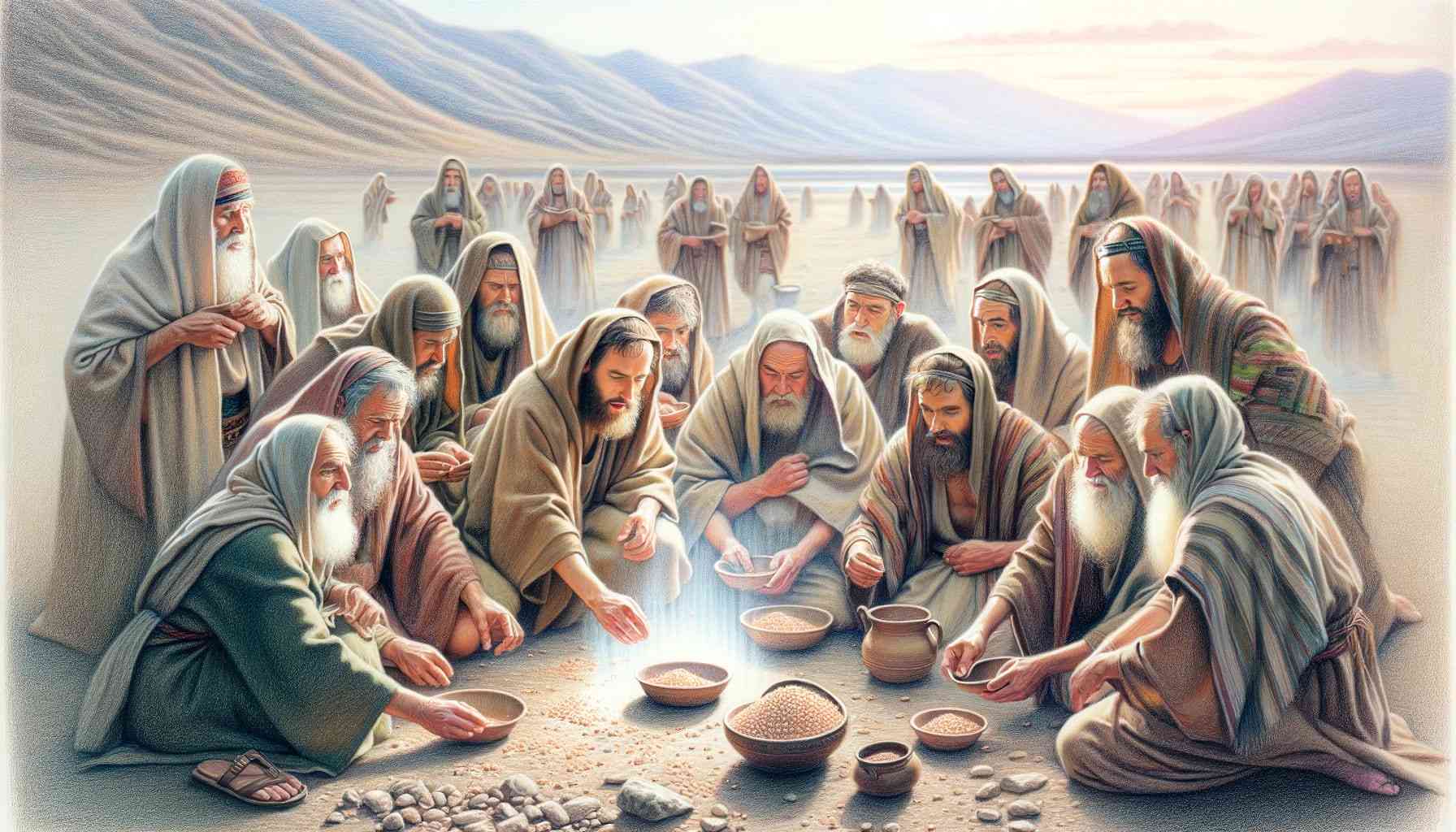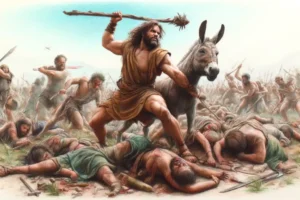
Manna from Heaven: Exodus 16
The story of Manna from Heaven is a significant and miraculous event detailed in the Bible, specifically in Exodus 16. Here are some quick facts about it:
- Context: The event takes place after the Israelites, led by Moses, have escaped from Egypt and are wandering in the desert. They grumble against Moses and Aaron due to the lack of food.
- God’s Promise: In response to their complaints, God promises to “rain bread from heaven” for the Israelites to collect each day, testing whether they will follow His law.
- Appearance and Taste: Manna is described as a fine, flake-like thing, fine as frost on the ground. It looked like white coriander seed and tasted like wafers made with honey.
- Daily Collection: The Israelites were instructed to gather an omer (about 2.3 liters or 2 quarts) for each person in their tent. They were to collect it every morning, as it would melt with the heat of the sun.
- Double Portion Before the Sabbath: On the sixth day, they were to gather a double portion, as the seventh day, the Sabbath, was a day of rest when no manna would fall.
- Prohibition Against Hoarding: When some tried to keep manna overnight (except for the portion collected on the sixth day), it would become foul and wormy.
- Duration: God provided manna for the Israelites for 40 years until they reached the border of Canaan, where they could eat the produce of the land.
- Symbolism and Significance: Manna is often seen as a symbol of God’s providence, mercy, and the sustenance that comes from faith in Him. It also prefigures the Eucharist in Christian theology.
- Preservation of Manna: As a testimony to future generations, Moses commanded that an omer of manna be put in a jar and kept before the Lord. According to the Bible, it was placed inside the Ark of the Covenant.
The narrative of Manna from Heaven in Exodus 16 offers a rich field for biblical theological analysis. This event not only provided physical sustenance for the Israelites but also served as a theological symbol with multifaceted implications throughout the biblical narrative. Here’s a detailed analysis focusing on its theological significance within the broader biblical context:
1. Divine Provision and Sustenance
- Immediate Context: In the wilderness, the Israelites faced extreme scarcity, doubting God’s care and presence. The provision of manna (meaning “What is it?”) was a direct response to their need, demonstrating God’s providential care for His people in tangible ways.
- Theological Implication: This act symbolizes God’s ability to provide for His people’s needs in unexpected ways. The manna is a foretaste of God’s provision in Christ, who is described in the New Testament as the “bread of life” (John 6:35).
2. Test of Obedience and Trust
- Divine Instruction: God’s command to gather only what was needed for each day (except before the Sabbath) was a test of the Israelites’ trust in His ongoing provision.
- Theological Implication: This reflects a broader biblical theme of reliance on God rather than on one’s resources or understanding. The daily collection of manna teaches about living in dependence on God’s word and provision, mirroring Jesus’ teaching in the Lord’s Prayer for daily bread (Matthew 6:11).
3. Sabbath Observance
- Sabbath Provision: The collection of a double portion on the sixth day with none appearing on the Sabbath highlighted the importance of Sabbath observance.
- Theological Implication: This aspect of the manna narrative underscores the sanctity of the Sabbath as a day of rest and trust in God’s provision. It serves as a reminder of both creation and God’s deliverance, anticipating the rest found in Christ (Hebrews 4).
4. Covenant Relationship
- Contextual Significance: The manna episode is situated within the broader narrative of the Sinai Covenant, serving as a tangible sign of the covenant relationship between God and Israel.
- Theological Implication: It underscores God’s commitment to His people and their need to trust and obey Him. This covenantal theme is echoed in the New Covenant through Christ’s sacrifice, which establishes a new basis for relationship with God.
5. Eschatological Fulfillment
- Typological Interpretation: The manna can be seen as a type of Christ, who in the New Testament declares Himself to be the “true bread from heaven” (John 6:32).
- Theological Implication: This points to the eschatological fulfillment of God’s provision and presence in the person of Jesus Christ, who not only meets the immediate physical needs but also addresses the spiritual hunger of humanity.
6. Community and Unity
- Equal Distribution: The instruction that each person was to gather an omer suggests an ethic of equality and communal responsibility.
- Theological Implication: This aspect of the narrative emphasizes the importance of community and care for one another within the people of God, reflecting the New Testament teachings on the church as the body of Christ where each member cares for the others (1 Corinthians 12).
The story of Manna from Heaven in Exodus 16 is not merely a historical account of God’s provision but a theologically rich narrative that speaks to the nature of God’s relationship with His people, the importance of trust and obedience, the sanctity of the Sabbath, and the anticipation of ultimate fulfillment in Christ. It teaches about God’s providence, the importance of daily dependence on Him, and the anticipation of a greater spiritual sustenance found in Jesus. Through this lens, biblical theology enables believers to see the depth and breadth of God’s redemptive plan as it unfolds from the wilderness wanderings to the coming of Christ and beyond.



